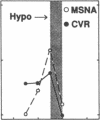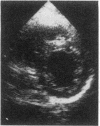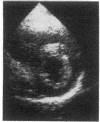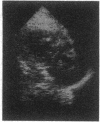Abstract
Acute hypotension is an important complication of hemodialysis, but the underlying mechanisms remain poorly understood. Because hemorrhage-induced hypovolemia can trigger a sudden decrease in sympathetic activity resulting in bradycardia and vasodilation, we hypothesized that hemodialysis-induced hypovolemia also can trigger the same type of vasodepressor reaction, which would exacerbate the volume-dependent fall in blood pressure. We therefore measured blood pressure, vascular resistance, and sympathetic nerve activity (intraneural microelectrodes) during sessions of maintenance hemodialysis in 7 patients with and 16 patients without a history of hemodialysis-induced hypotension. During hemodialysis, blood pressure at first remained unchanged as calf resistance increased in both hypotension-resistant (from 37 +/- 4 to 49 +/- 5 U, P < 0.05) and hypotension-prone (from 42 +/- 6 to 66 +/- 12 U, P < 0.05) patients; sympathetic activity increased comparably in the subset of patients in whom it could be measured. With continued hemodialysis, calf resistance and sympathetic activity increased further in the hypotension-resistant patients, but in the hypotension-prone patients the precipitous decrease in blood pressure was accompanied by decreases in sympathetic activity, vascular resistance, and heart rate as well as symptoms of vasodepressor syncope. On an interdialysis day, both groups of patients increased vascular resistance normally during unloading of cardiopulmonary baroreceptors with lower body negative pressure and increased heart rate normally during unloading of arterial baroreceptors with infusion of nitroprusside. These findings indicate that in a group of hemodialysis patients without diabetes or other conditions known to impair autonomic reflexes, hemodialysis-induced hypotension is not caused by chronic uremic impairment in arterial or cardiopulmonary baroreflexes but rather by acute, paradoxical withdrawal of sympathetic vasoconstrictor drive producing vasodepressor syncope.
Full text
PDF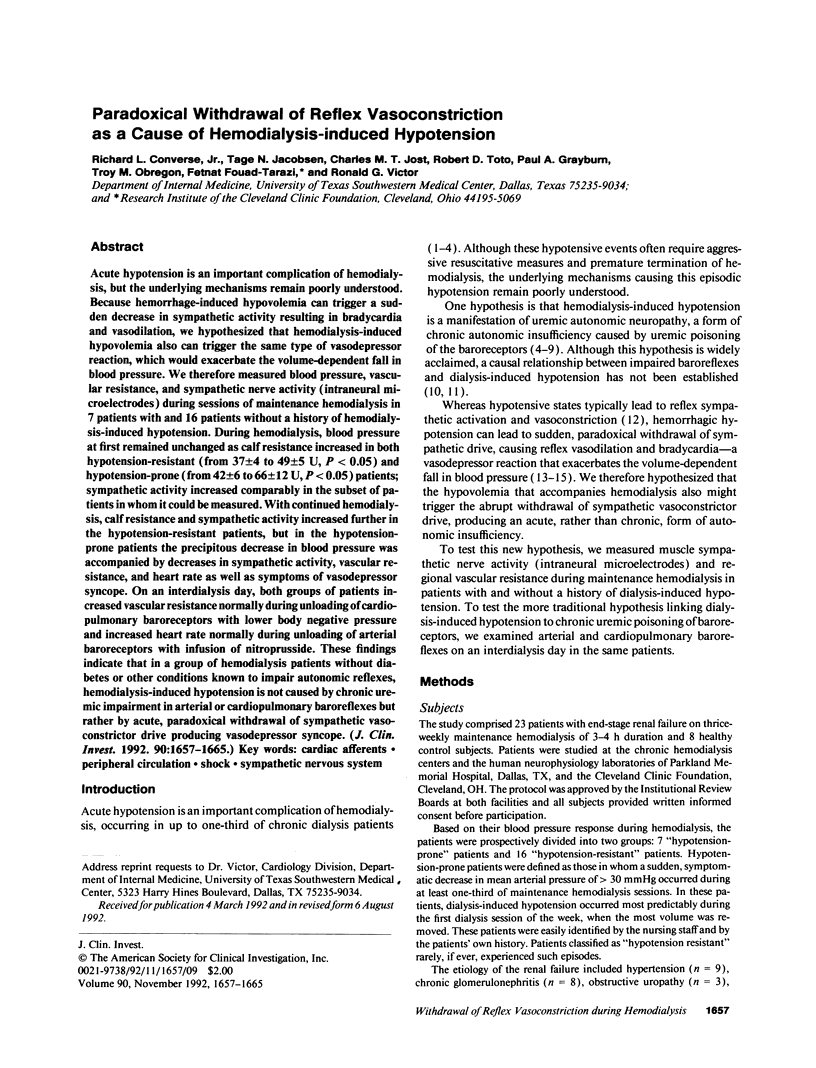

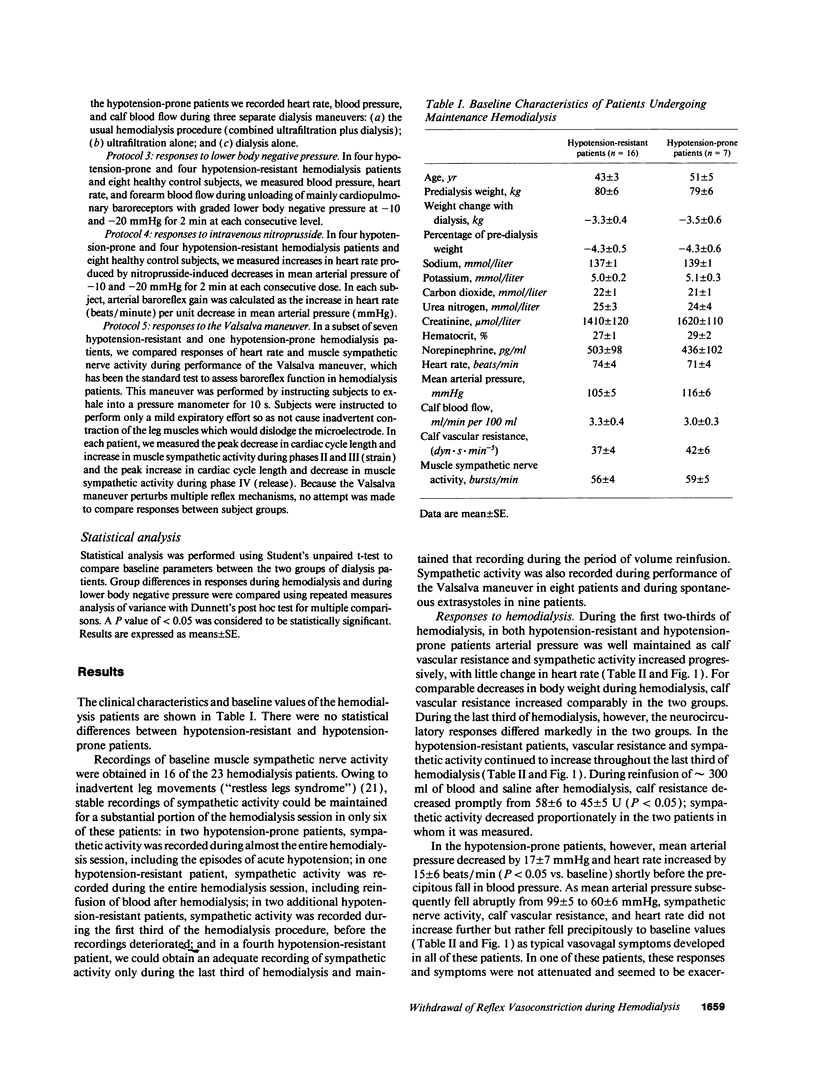
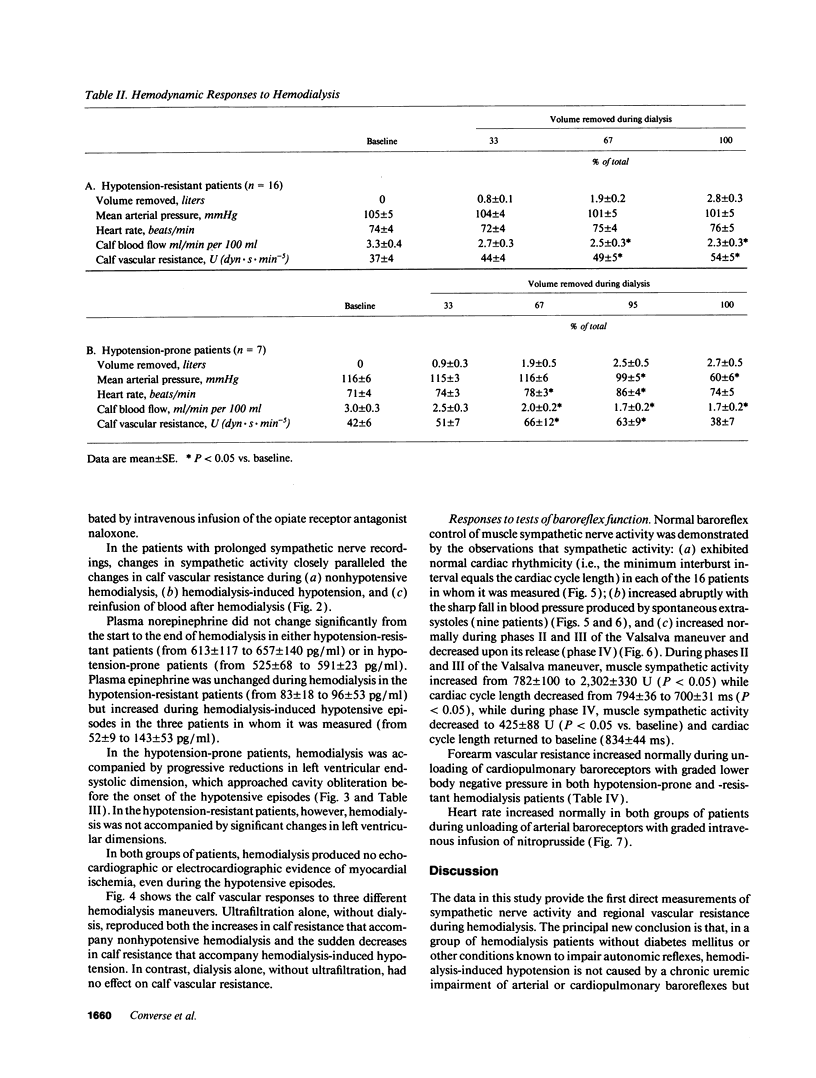



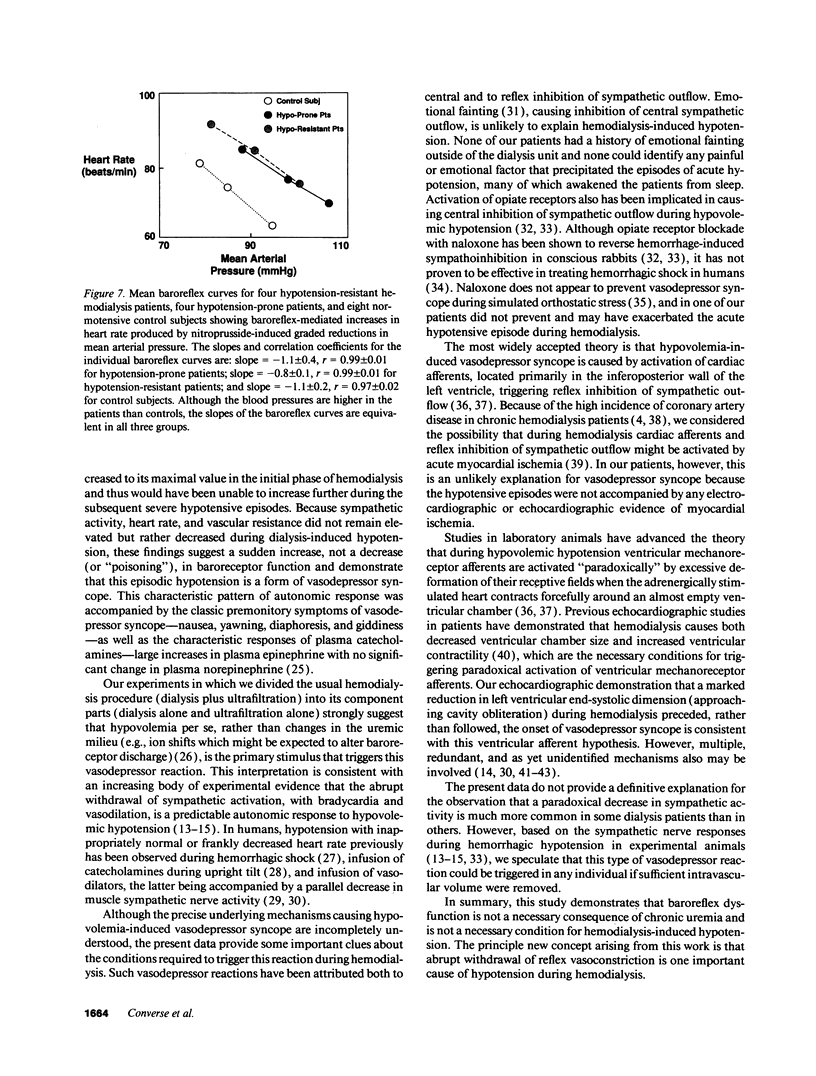

Images in this article
Selected References
These references are in PubMed. This may not be the complete list of references from this article.
- Abboud F. M. Ventricular syncope: is the heart a sensory organ? N Engl J Med. 1989 Feb 9;320(6):390–392. doi: 10.1056/NEJM198902093200609. [DOI] [PubMed] [Google Scholar]
- Aksamit T. R., Floras J. S., Victor R. G., Aylward P. E. Paroxysmal hypertension due to sinoaortic baroreceptor denervation in humans. Hypertension. 1987 Mar;9(3):309–314. doi: 10.1161/01.hyp.9.3.309. [DOI] [PubMed] [Google Scholar]
- Almquist A., Goldenberg I. F., Milstein S., Chen M. Y., Chen X. C., Hansen R., Gornick C. C., Benditt D. G. Provocation of bradycardia and hypotension by isoproterenol and upright posture in patients with unexplained syncope. N Engl J Med. 1989 Feb 9;320(6):346–351. doi: 10.1056/NEJM198902093200603. [DOI] [PubMed] [Google Scholar]
- Bernton E. W. Naloxone and TRH in the treatment of shock and trauma: what future roles? Ann Emerg Med. 1985 Aug;14(8):729–735. doi: 10.1016/s0196-0644(85)80047-0. [DOI] [PubMed] [Google Scholar]
- Brown A. M. Receptors under pressure. An update on baroreceptors. Circ Res. 1980 Jan;46(1):1–10. doi: 10.1161/01.res.46.1.1. [DOI] [PubMed] [Google Scholar]
- Callaghan N. Restless legs syndrome in uremic neuropathy. Neurology. 1966 Apr;16(4):359–361. doi: 10.1212/wnl.16.4.359. [DOI] [PubMed] [Google Scholar]
- Fagius J., Wallin B. G., Sundlöf G., Nerhed C., Englesson S. Sympathetic outflow in man after anaesthesia of the glossopharyngeal and vagus nerves. Brain. 1985 Jun;108(Pt 2):423–438. doi: 10.1093/brain/108.2.423. [DOI] [PubMed] [Google Scholar]
- Henderson L. W. Symptomatic hypotension during hemodialysis. Kidney Int. 1980 May;17(5):571–576. doi: 10.1038/ki.1980.67. [DOI] [PubMed] [Google Scholar]
- Henrich W. L. Hemodynamic instability during hemodialysis. Kidney Int. 1986 Oct;30(4):605–612. doi: 10.1038/ki.1986.228. [DOI] [PubMed] [Google Scholar]
- Kersh E. S., Kronfield S. J., Unger A., Popper R. W., Cantor S., Cohn K. Autonomic insufficiency in uremia as a cause of hemodialysis-induced hypotension. N Engl J Med. 1974 Mar 21;290(12):650–653. doi: 10.1056/NEJM197403212901203. [DOI] [PubMed] [Google Scholar]
- LANDGREN S. On the excitation mechanism of the carotid baroceptors. Acta Physiol Scand. 1952 Jul 17;26(1):1–34. doi: 10.1111/j.1748-1716.1952.tb00889.x. [DOI] [PubMed] [Google Scholar]
- Lazarus J. M., Hampers C. L., Lowrie E. G., Merrill J. P. Baroreceptor activity in normotensive and hypertensive uremic patients. Circulation. 1973 May;47(5):1015–1021. doi: 10.1161/01.cir.47.5.1015. [DOI] [PubMed] [Google Scholar]
- Lilley J. J., Golden J., Stone R. A. Adrenergic regulation of blood pressure in chronic renal failure. J Clin Invest. 1976 May;57(5):1190–1200. doi: 10.1172/JCI108387. [DOI] [PMC free article] [PubMed] [Google Scholar]
- Lindner A., Charra B., Sherrard D. J., Scribner B. H. Accelerated atherosclerosis in prolonged maintenance hemodialysis. N Engl J Med. 1974 Mar 28;290(13):697–701. doi: 10.1056/NEJM197403282901301. [DOI] [PubMed] [Google Scholar]
- Mark A. L., Victor R. G., Nerhed C., Wallin B. G. Microneurographic studies of the mechanisms of sympathetic nerve responses to static exercise in humans. Circ Res. 1985 Sep;57(3):461–469. doi: 10.1161/01.res.57.3.461. [DOI] [PubMed] [Google Scholar]
- Morgan D. A., Thoren P., Wilczynski E. A., Victor R. G., Mark A. L. Serotonergic mechanisms mediate renal sympathoinhibition during severe hemorrhage in rats. Am J Physiol. 1988 Sep;255(3 Pt 2):H496–H502. doi: 10.1152/ajpheart.1988.255.3.H496. [DOI] [PubMed] [Google Scholar]
- Morita H., Nishida Y., Motochigawa H., Uemura N., Hosomi H., Vatner S. F. Opiate receptor-mediated decrease in renal nerve activity during hypotensive hemorrhage in conscious rabbits. Circ Res. 1988 Jul;63(1):165–172. doi: 10.1161/01.res.63.1.165. [DOI] [PubMed] [Google Scholar]
- Morita H., Vatner S. F. Effects of hemorrhage on renal nerve activity in conscious dogs. Circ Res. 1985 Nov;57(5):788–793. doi: 10.1161/01.res.57.5.788. [DOI] [PubMed] [Google Scholar]
- Nakashima Y., Fouad F. M., Nakamoto S., Textor S. C., Bravo E. L., Tarazi R. C. Localization of autonomic nervous system dysfunction in dialysis patients. Am J Nephrol. 1987;7(5):375–381. doi: 10.1159/000167503. [DOI] [PubMed] [Google Scholar]
- Nies A. S., Robertson D., Stone W. J. Hemodialysis hypotension is not the result of uremic peripheral autonomic neuropathy. J Lab Clin Med. 1979 Sep;94(3):395–402. [PubMed] [Google Scholar]
- Nixon J. V., Mitchell J. H., McPhaul J. J., Jr, Henrich W. L. Effect of hemodialysis on left ventricular function. Dissociation of changes in filling volume and in contractile state. J Clin Invest. 1983 Feb;71(2):377–384. doi: 10.1172/JCI110779. [DOI] [PMC free article] [PubMed] [Google Scholar]
- Oberg B., Thorén P. Increased activity in left ventricular receptors during hemorrhage or occlusion of caval veins in the cat. A possible cause of the vaso-vagal reaction. Acta Physiol Scand. 1972 Jun;85(2):164–173. doi: 10.1111/j.1748-1716.1972.tb05247.x. [DOI] [PubMed] [Google Scholar]
- Peuler J. D., Schmid P. G., Morgan D. A., Mark A. L. Inhibition of renal sympathetic activity and heart rate by vasopressin in hemorrhaged diabetes insipidus rats. Am J Physiol. 1990 Mar;258(3 Pt 2):H706–H712. doi: 10.1152/ajpheart.1990.258.3.H706. [DOI] [PubMed] [Google Scholar]
- Robertson D., Johnson G. A., Robertson R. M., Nies A. S., Shand D. G., Oates J. A. Comparative assessment of stimuli that release neuronal and adrenomedullary catecholamines in man. Circulation. 1979 Apr;59(4):637–643. doi: 10.1161/01.cir.59.4.637. [DOI] [PubMed] [Google Scholar]
- Rostand S. G., Brunzell J. D., Cannon R. O., 3rd, Victor R. G. Cardiovascular complications in renal failure. J Am Soc Nephrol. 1991 Dec;2(6):1053–1062. doi: 10.1681/ASN.V261053. [DOI] [PubMed] [Google Scholar]
- Schadt J. C., McKown M. D., McKown D. P., Franklin D. Hemodynamic effects of hemorrhage and subsequent naloxone treatment in conscious rabbits. Am J Physiol. 1984 Sep;247(3 Pt 2):R497–R505. doi: 10.1152/ajpregu.1984.247.3.R497. [DOI] [PubMed] [Google Scholar]
- Scherrer U., Vissing S., Morgan B. J., Hanson P., Victor R. G. Vasovagal syncope after infusion of a vasodilator in a heart-transplant recipient. N Engl J Med. 1990 Mar 1;322(9):602–604. doi: 10.1056/NEJM199003013220906. [DOI] [PubMed] [Google Scholar]
- Schiller N. B., Shah P. M., Crawford M., DeMaria A., Devereux R., Feigenbaum H., Gutgesell H., Reichek N., Sahn D., Schnittger I. Recommendations for quantitation of the left ventricle by two-dimensional echocardiography. American Society of Echocardiography Committee on Standards, Subcommittee on Quantitation of Two-Dimensional Echocardiograms. J Am Soc Echocardiogr. 1989 Sep-Oct;2(5):358–367. doi: 10.1016/s0894-7317(89)80014-8. [DOI] [PubMed] [Google Scholar]
- Secher N. H., Bie P. Bradycardia during reversible haemorrhagic shock--a forgotten observation? Clin Physiol. 1985 Aug;5(4):315–323. doi: 10.1111/j.1475-097x.1985.tb00752.x. [DOI] [PubMed] [Google Scholar]
- Siggaard-Andersen J. Venous occlusion plethysmography on the calf. Evaluation of diagnosis and results in vascular surgery. Dan Med Bull. 1970 Jun;17(Suppl):1–68. [PubMed] [Google Scholar]
- Skoog P., Månsson J., Thorén P. Changes in renal sympathetic outflow during hypotensive haemorrhage in rats. Acta Physiol Scand. 1985 Dec;125(4):655–660. doi: 10.1111/j.1748-1716.1985.tb07768.x. [DOI] [PubMed] [Google Scholar]
- Thames M. D., Abboud F. M. Reflex inhibition of renal sympathetic nerve activity during myocardial ischemia mediated by left ventricular receptors with vagal afferents in dogs. J Clin Invest. 1979 Mar;63(3):395–402. doi: 10.1172/JCI109315. [DOI] [PMC free article] [PubMed] [Google Scholar]
- Vallbo A. B., Hagbarth K. E., Torebjörk H. E., Wallin B. G. Somatosensory, proprioceptive, and sympathetic activity in human peripheral nerves. Physiol Rev. 1979 Oct;59(4):919–957. doi: 10.1152/physrev.1979.59.4.919. [DOI] [PubMed] [Google Scholar]
- Victor R. G., Thorén P., Morgan D. A., Mark A. L. Differential control of adrenal and renal sympathetic nerve activity during hemorrhagic hypotension in rats. Circ Res. 1989 Apr;64(4):686–694. doi: 10.1161/01.res.64.4.686. [DOI] [PubMed] [Google Scholar]
- Wallin B. G., Sundlöf G. Sympathetic outflow to muscles during vasovagal syncope. J Auton Nerv Syst. 1982 Nov;6(3):287–291. doi: 10.1016/0165-1838(82)90001-7. [DOI] [PubMed] [Google Scholar]
- Zoccali C., Ciccarelli M., Maggiore Q. Defective reflex control of heart rate in dialysis patients: evidence for an afferent autonomic lesion. Clin Sci (Lond) 1982 Sep;63(3):285–292. doi: 10.1042/cs0630285. [DOI] [PubMed] [Google Scholar]
- Zoller R. P., Mark A. L., Abboud F. M., Schmid P. G., Heistad D. D. The role of low pressure baroreceptors in reflex vasoconstrictor responses in man. J Clin Invest. 1972 Nov;51(11):2967–2972. doi: 10.1172/JCI107121. [DOI] [PMC free article] [PubMed] [Google Scholar]




